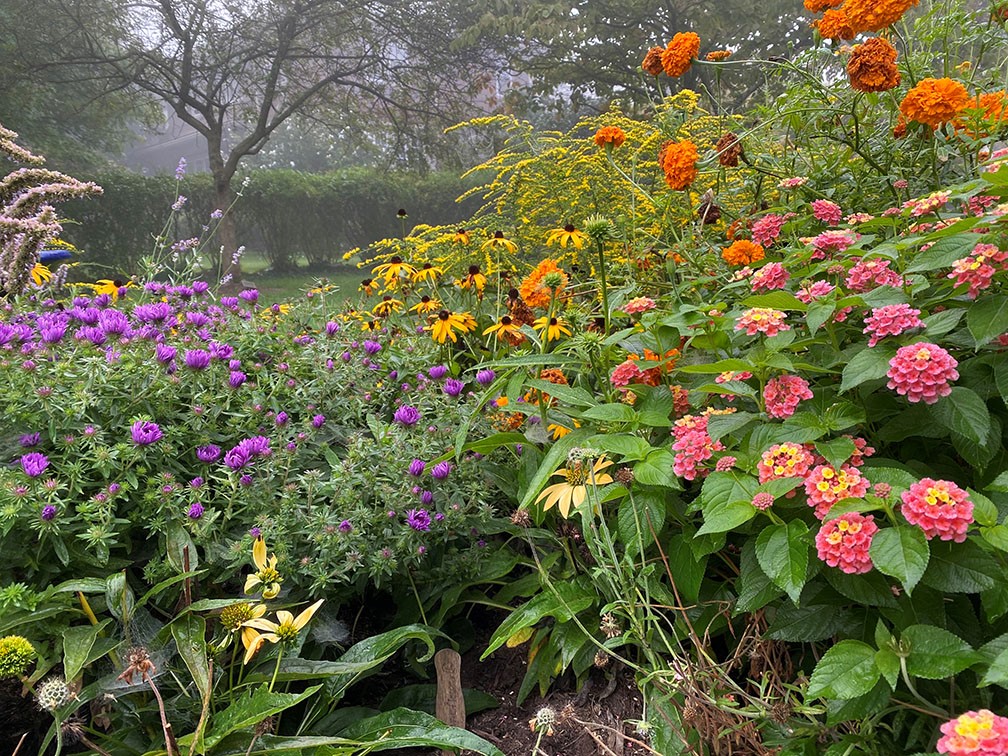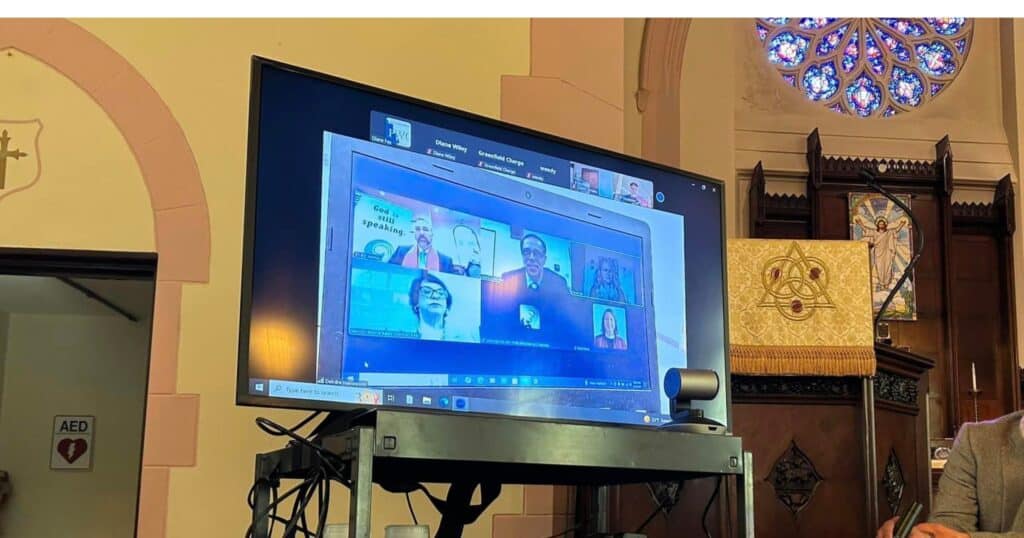Church pollinator gardens in full bloom
There’s plenty abuzz outside the walls of churches across the United Church of Christ.
Bees, butterflies, birds and bugs are becoming frequent visitors at gardens designed specifically to transform church lawns into native plant environments prime for pollinators.
From newly installed beds to well-established butterfly waystations, here is a peek into three of the many gardens that support the environmental need for pollinators and add a splash of color and welcome in their communities.
‘A breath of fresh air’ in Wisconsin
When First Congregational Church of Ripon, Wis., held a planting party in June, the congregation’s eldest and youngest congregants worked side-by-side to install a native garden in front of the church building.
Dawn Scholtens and Mary Iserman, two coordinators of the garden, observed one child excited to name a plant, and another holding a rainbow flag from their LGBTQ Sunday service in one hand and a plant plug in the other.
“The feeling I had when everyone was there was that this is what we wanted — we wanted to include everybody,” Scholtens said.
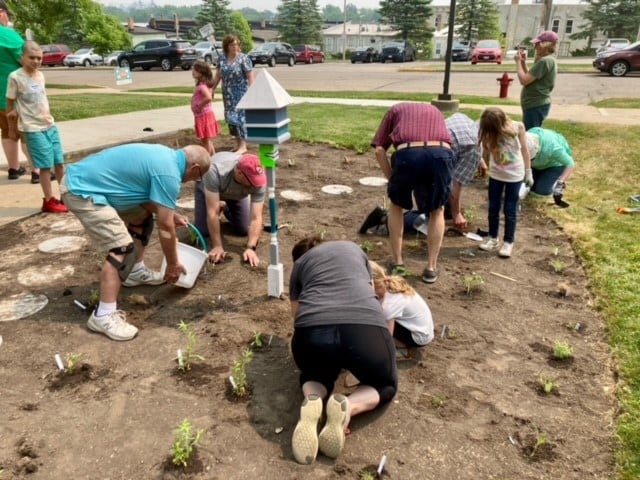
“Our goal was to get it to be multigenerational, multicultural, ecological, and I think we’ve met that or at least are on our way to meeting that,” said Iserman.
The volunteers located a 64-plant native pollinator plant package at a local plant nursery, and congregants contributed in many additional ways — offering items like a birdhouse, additional seeds, pavers and the work to prepare the once grass-covered plot for planting.
They were also intentional to learn about the Ho-Chunk people indigenous to the area and plants that are important to them.
“We believe that through this garden we can care for God’s creation and provide a relationship with our creator,” Iserman said. “We hope to see the college students from the neighboring college sitting and taking respite from their heavy workload. We hope to see others walking by the church grounds stopping to get a breath of fresh air and enjoying the color that is being provided. We hope to see members sitting on the bench and understanding how the environment and climate change and native plants all interact.”
‘The garden evokes who we are’
A piece of advice they learned in the process and want to pass along: keep all the tags that identify the plants together with them in the ground.
“Just this last week, I still wondered if one was a plant or a weed,” Iserman said. Fortunately, another member yelled, “It’s a plant! Don’t touch it!”
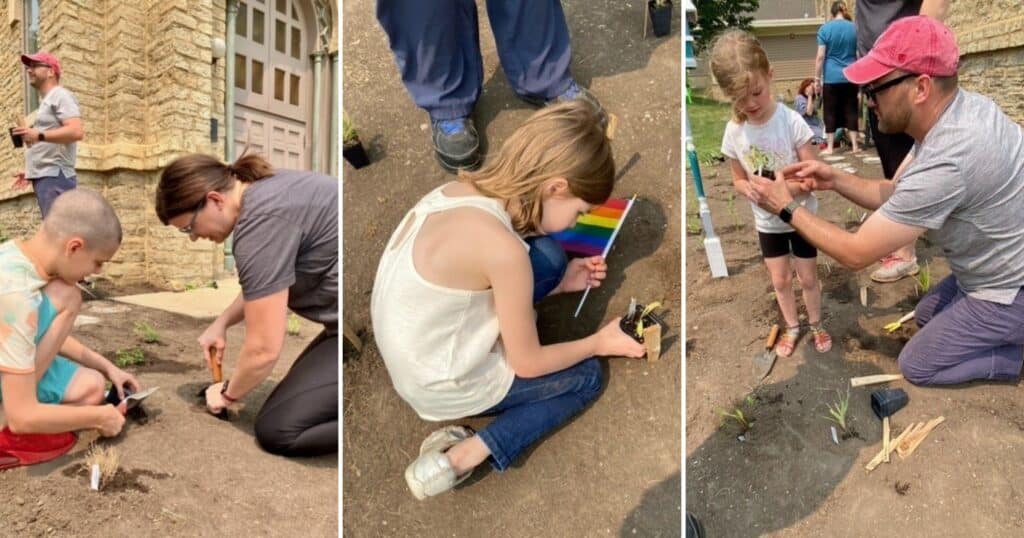
The coordinators anticipate how the garden will become more established over time, need less water and offer space to their broader community.
“To me the garden evokes who we are,” Iserman said. “It all goes back to community. Please sit on our grounds. Please sit in our garden. Whoever you are, you are welcome.”
Butterfly waystation in Illinois
Ten different butterfly species are now regularly spotted in the Mayfield Monarch Waystation in Sycamore, Ill. That’s along with bees, insects and birds like ruby-throated hummingbirds, song sparrows, goldfinches and brown thrashers.
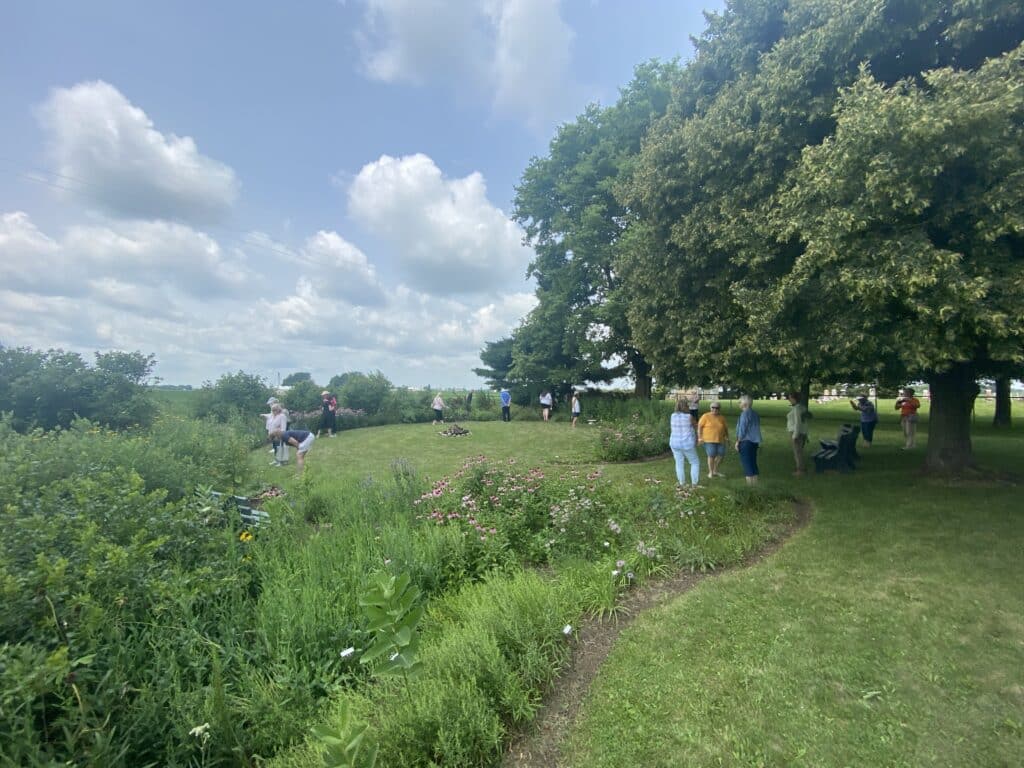
The group that proposed creating this garden at Mayfield Congregational Church UCC in 2013 took seriously the news that monarch butterflies had experienced a decline of 90% since the mid-1990s.
“We felt that our location among the farms of rural DeKalb County made it appropriate to pursue a creation stewardship mission at Mayfield,” said Diana Swanson, lead gardener and designer at Mayfield.
The space with only plant species native to Northern Illinois was designed as a swirl which echoes the shape of a labyrinth and the UCC “God is Still Speaking” comma, Swanson said, adding that “the shape invites people to come in and walk around the edges of the swirl to enjoy the plants, bees and butterflies.”
A demonstration garden
The invitation for people to step inside and learn has become a significant part of the garden’s mission.
As a demonstration garden, it is “intended to show people that they can create beautiful gardens in their own yards with native plants that help the environment and that help people because the human food system depends on pollinators,” Swanson said. “Native pollinators are essential to our food system. They pollinate more plants and often more efficiently than honeybees do.”
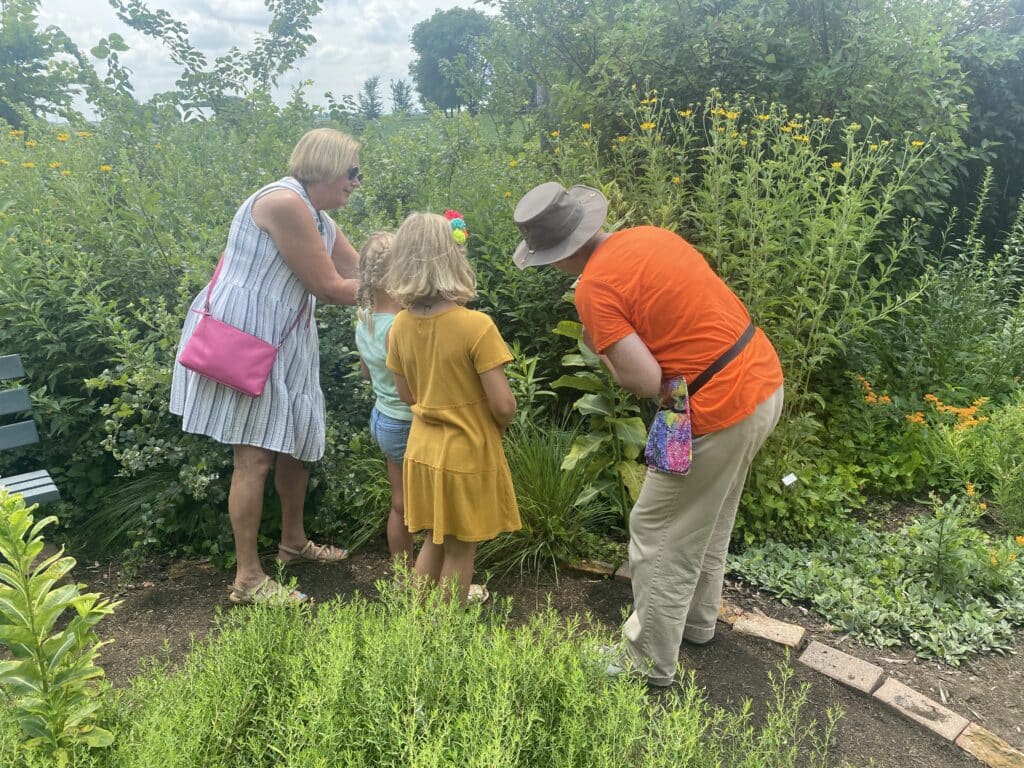
Over 300 people visited the garden as the educational spotlight garden for the Dekalb County Garden Walk. Mayfield also collaborated with the University of Illinois Extension to present a series of free educational events for the public on topics like gardening with native plants, garden photography, and crafting with nature. They have registered the garden with the Illinois Audubon Society as a Bird and Butterfly Sanctuary.
It took years to gather the resources needed to develop the garden and for the plants to become established, Swanson said. Now, it’s an area highlight.
A local filmmaker created a documentary, “Plants, Pollinators, and Prayers,” that follows the congregation’s transformation of the space.
“Bit by bit, we are helping to get out the word about native plants and pollinators,” Swanson said.
Inspiring community in Kentucky
A pollinator garden at the front corner of the church was one of the first projects tackled by the green team of Christ Church UCC in Fort Thomas, Ky., when it formed last year.
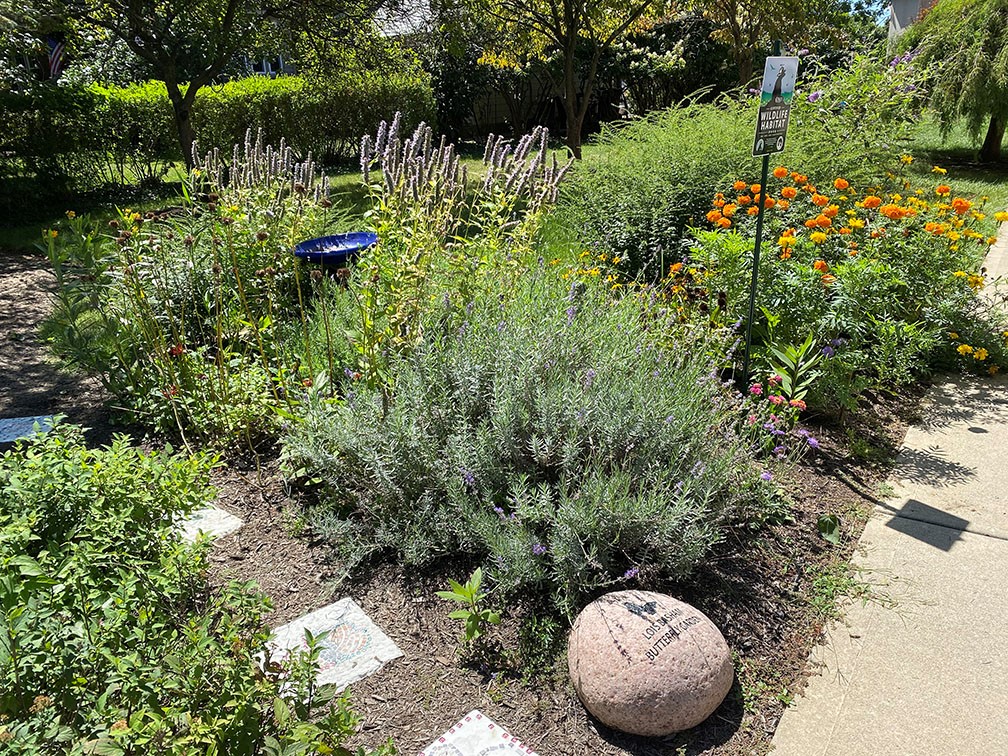
“We wanted to both help the environment and to inspire and educate our community about pollinator gardens and their importance in our ecosystem,” said Michele Wright, the church’s communications director.
The congregation selected a publicly accessible area and used layers of soaked newspaper, topsoil and compost to transform the lawn into gardening space. They received grants and advice from their local county extension service to help select hardy and deer resistant pollinator plants.
Now in its second year, the garden has developed through community collaboration. Bloom Home School, who rents space at the church, planted this year’s annuals and distributed mulch. They’re helping create a brochure that will be available in a lidded box in the garden to offer more information for anyone walking by on creating pollinator gardens, Wright said.
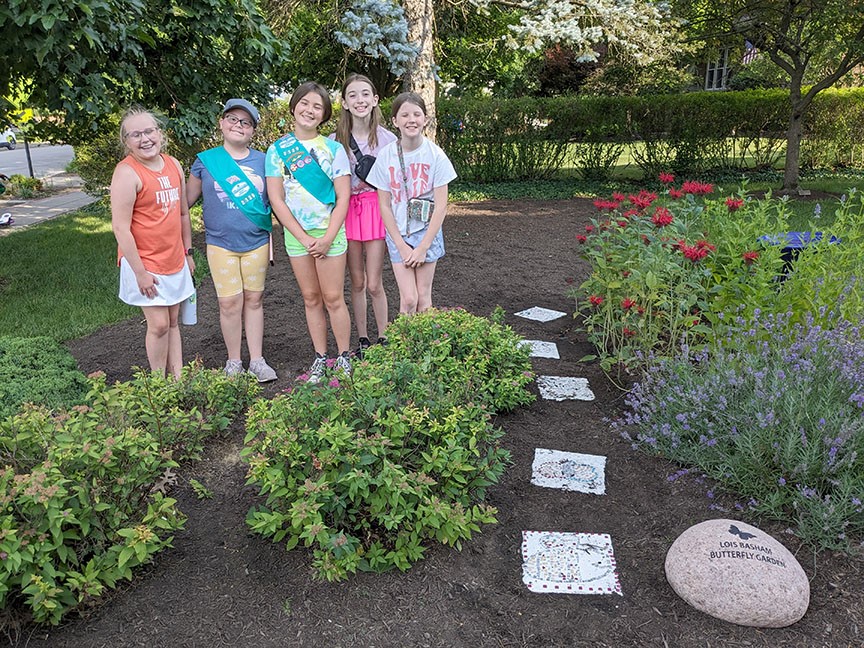
A neighborhood Girl Scout troop helped document the plants in the garden for the brochure, and they installed stepping stones made by their leader, Briana Smith. The troop registered the garden with the nearby Cincinnati Zoo & Botanical Garden as a certified pollinator habitat.
The Christ Church green team recently received certification through the National Wildlife Federation (NWF) as a backyard habitat and added a small sign displaying this in the garden.
“Anyone can create a welcoming haven for local wildlife. It’s fun, easy, and can make a lasting difference in our area,” said Wright. “Rapid and large-scale changes to our land and water mean wildlife is losing the habitats they once knew. Every habitat garden helps replace resources for bees, butterflies, birds, amphibians and more.”
Content on ucc.org is copyrighted by the National Setting of the United Church of Christ and may be only shared according to the guidelines outlined here.
Related News
All four Pennsylvania conferences pass motion toward one combined conference
On Nov. 9, each of the four United Church of Christ conferences in Pennsylvania passed the...
Read MoreFlorida UCC churches organize helping hands in wake of recent hurricanes
The gulf coast of Pinellas County, Florida recently suffered a destructive double whammy...
Read MoreCommentary: Honoring queer lives, remembering trans siblings lost
This week marks Transgender Day of Remembrance (TDOR), an annual time of mourning and honoring...
Read More